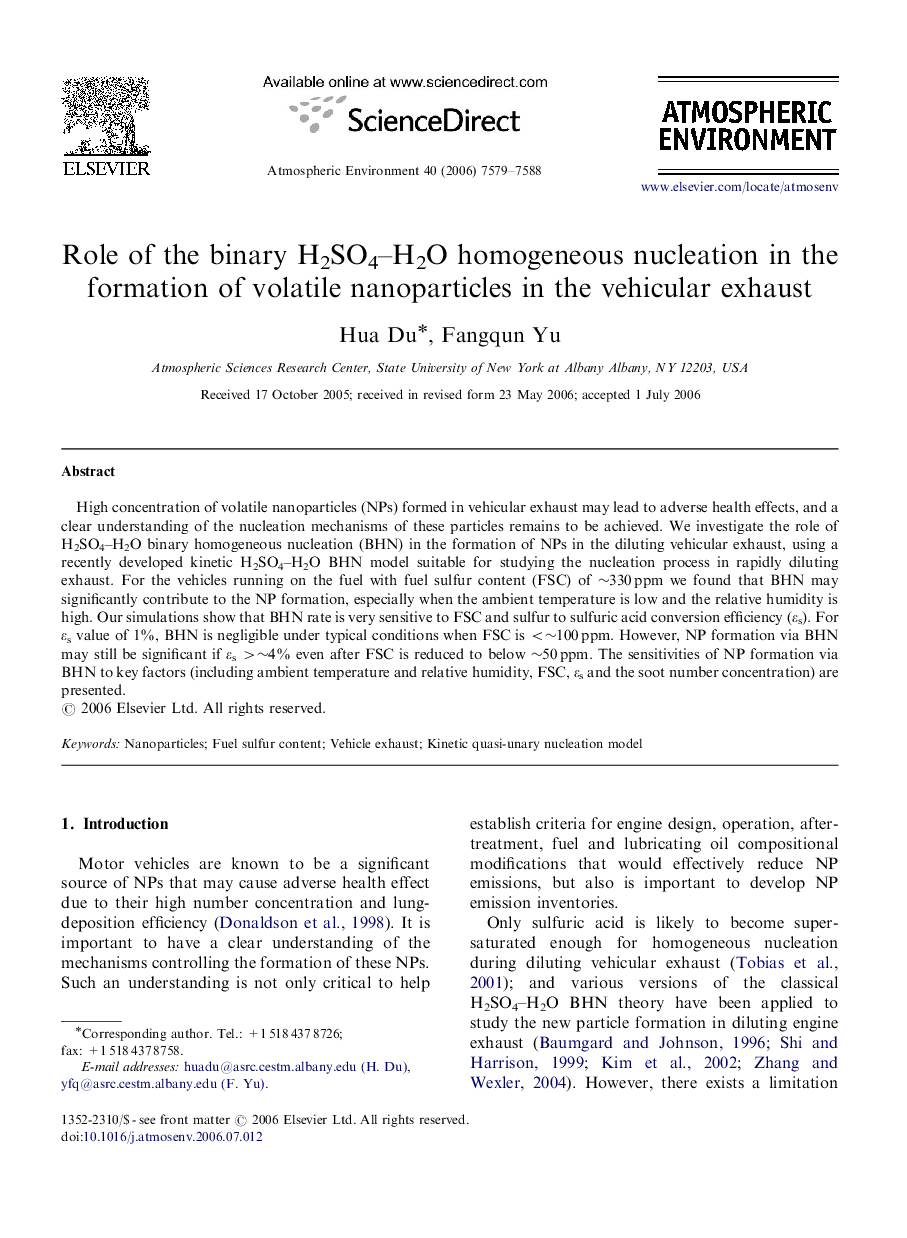| Article ID | Journal | Published Year | Pages | File Type |
|---|---|---|---|---|
| 4443207 | Atmospheric Environment | 2006 | 10 Pages |
High concentration of volatile nanoparticles (NPs) formed in vehicular exhaust may lead to adverse health effects, and a clear understanding of the nucleation mechanisms of these particles remains to be achieved. We investigate the role of H2SO4–H2O binary homogeneous nucleation (BHN) in the formation of NPs in the diluting vehicular exhaust, using a recently developed kinetic H2SO4–H2O BHN model suitable for studying the nucleation process in rapidly diluting exhaust. For the vehicles running on the fuel with fuel sulfur content (FSC) of ∼330 ppm we found that BHN may significantly contribute to the NP formation, especially when the ambient temperature is low and the relative humidity is high. Our simulations show that BHN rate is very sensitive to FSC and sulfur to sulfuric acid conversion efficiency (εs). For εs value of 1%, BHN is negligible under typical conditions when FSC is <∼100 ppm. However, NP formation via BHN may still be significant if εs >∼4% even after FSC is reduced to below ∼50 ppm. The sensitivities of NP formation via BHN to key factors (including ambient temperature and relative humidity, FSC, εs and the soot number concentration) are presented.
